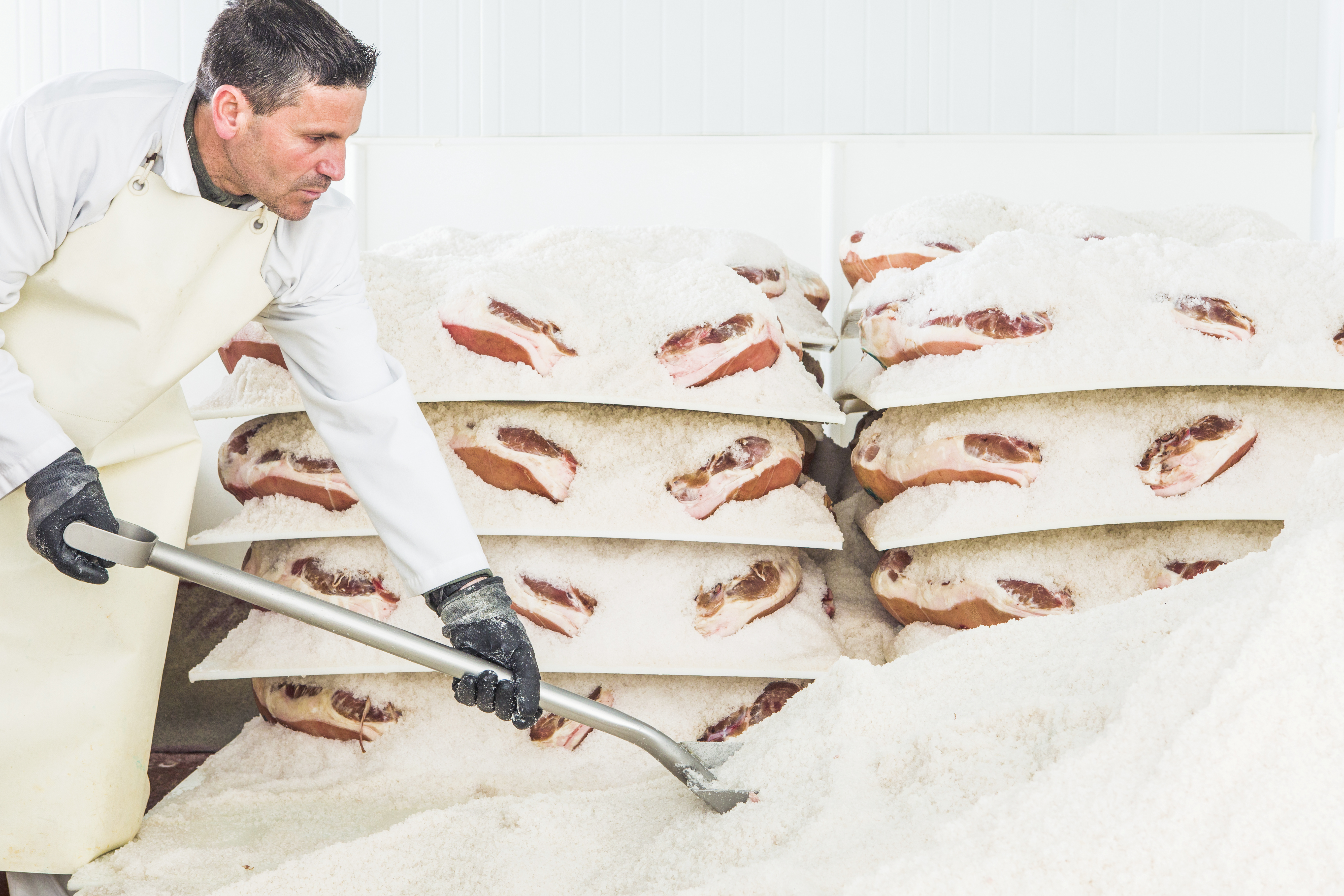It’s no secret that ham is a salty product. These days, when food is largely categorised by how it affects our health, a salty product does not seem to make sense, and in many ways, this is true.
For thousands of years, when there was no refrigeration capable of conserving meat or fish for more than two or three days, human beings sought out different ways of stopping it going off: from smoking to spices, of course including salt. Wide-ranging preservation systems have been developed in cuisines all over the world. Each culture found its own way depending on easily-available resources. In Spain, one of the most popular options was salt, either preserving in brine or by dry salting.
Obviously, these preservation processes are no longer necessary these days, but the flavour of tradition is difficult to erase from a culture. Ham is no longer salted out of necessity; it is salted out of real pleasure.
However, well-aware of this situation, the sector industry is working so as to, little by little, reduce the quantity required to make this wonderful product without affecting its organoleptic qualities and, in turn, keep us healthy.
However, why is salt so necessary in the ham we eat in Spain? To make the ham, we must extract any water in the meat to stop microorganisms from spreading. And salt has an osmotic effect; it is capable of extracting water from inside the ham and in turn, penetrating the lean part through diffusion. It is this capability to “suck up” the water that makes it a ham’s best friend. During the process, there is a series of proteolytic phenomena (breaking down proteins) that are partly responsible for the appearance of the final product’s characteristic fragrance, flavour and texture. Given that this phenomenon carries on until the end of the process and given that it has to take place at gradually increasing temperatures, this could not be done without removing the water from the muscle bulk until the risk of contamination has been reduced. According to Jacint Arnau, Head of the Technology Unit of the Agro-food Research and Technology Institute (IRTA), “the salt content from a sensory and nutritional point of view should not be too high and from the microbiological perspective, not too low”.
At La Estrella del Jamón we are known for making a ham with a low final salt quantity. One of our family’s maxims is to get a ham with the least salty taste possible; we want the ham to taste of ham. This is achieved by reducing the salting time (the ham salting process) and with a long curing process, that has to do with the actual aged flavour of the ham rather than achieving a reasonably consistent texture. Some researchers, such as Baldini, state that less salted hams have higher values of free amino acids. This is related to the improved flavour of cured hams. So, if we manage to balance our use of salt, we will get a ham with exceptional curing and flavour.


